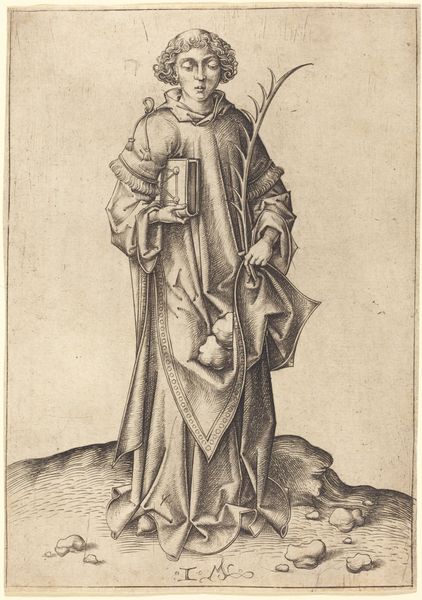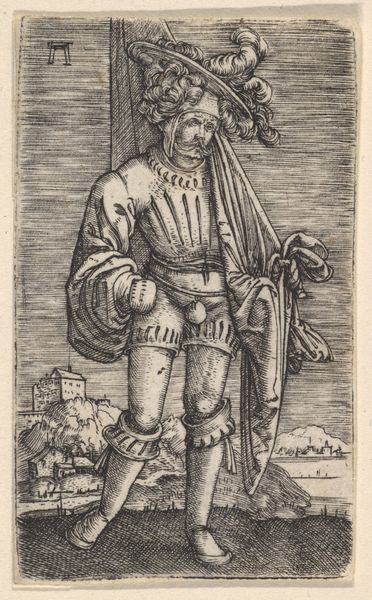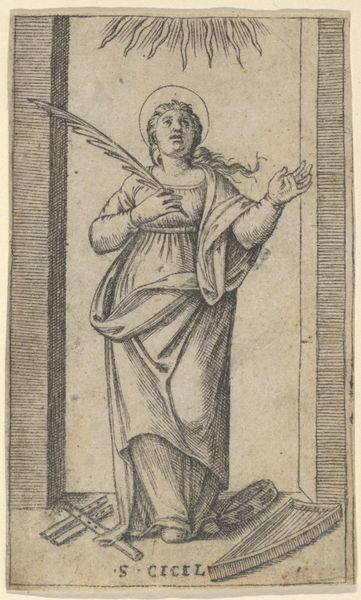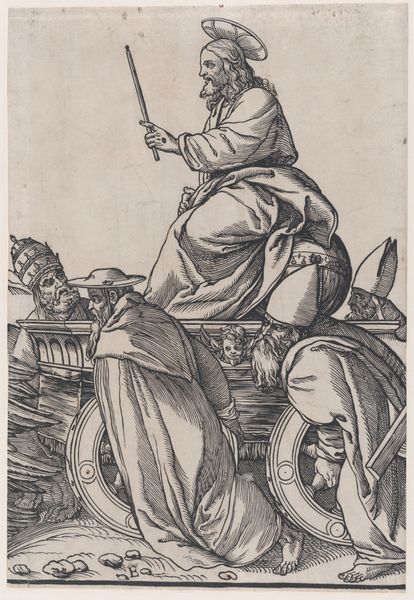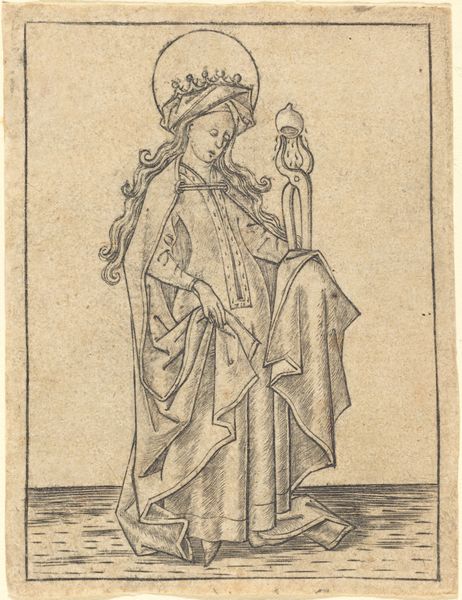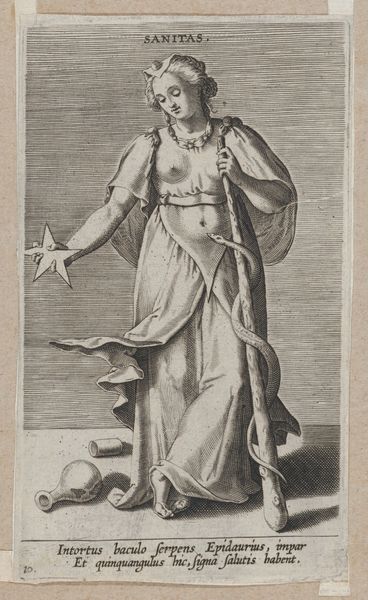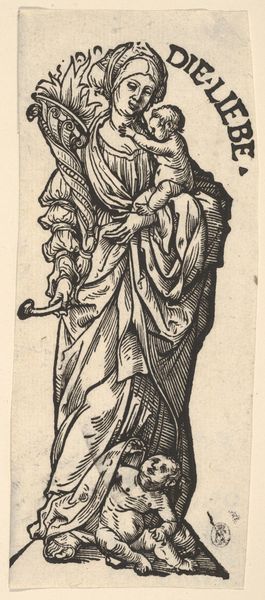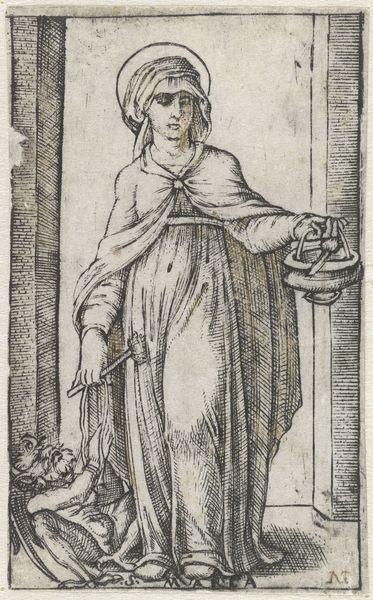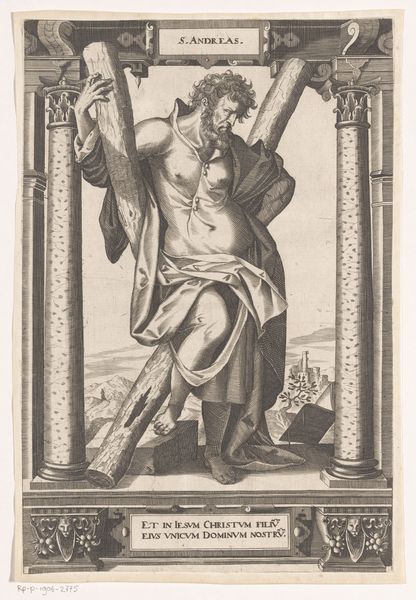
Victory or Minerva, helmet on the groud to the right 1500 - 1510
drawing, print, engraving
drawing
allegory
figuration
history-painting
italian-renaissance
engraving
Dimensions: sheet: 6 7/16 x 4 15/16 in. (16.3 x 12.5 cm) plate: 6 1/8 x 4 3/16 in. (15.5 x 10.6 cm)
Copyright: Public Domain
Curator: I'm immediately struck by the delicate nature of this engraving; the crisp lines give such clear form. It evokes a somber and quiet atmosphere. Editor: Indeed. Let's consider this piece by Nicoletto da Modena, titled "Victory or Minerva, helmet on the ground to the right," created between 1500 and 1510. As a product of the Italian Renaissance, it represents a potent moment in the reception of classical antiquity. The theme reflects, in many ways, on humanist virtue in Renaissance society, where success hinged on many factors. Curator: What grabs me is the helmet discarded at Minerva's feet. That seems so unusual—what's the significance? The figure herself doesn’t project overt power. She almost seems weary. Editor: I interpret that abandoned helmet as signifying both a relinquishing and a shifting of power dynamics. Consider Minerva's multifaceted role as a virgin goddess of warfare, handicrafts, and wisdom; placing the discarded war helmet in contrast to the tree is powerful, symbolizing, perhaps, a society in transition. Is the power shift related to shifting identities, gender roles? What is power when the signifier has been stripped away? Curator: That resonates deeply. Looking closer, there is a contrast between the raw trunk and the goddess’ calm, ordered drapery; I wonder how contemporary gender roles inform this representation of "Victory." It feels like the picture could tell a nuanced story about shifting societal expectations, between gender and success as performative. Editor: It could indeed. By embracing this intersectional reading, we can view Renaissance imagery, like that deployed in da Modena’s print, not as isolated or static icons but as testaments to the ever-evolving dialogues that inform society and visual art, in turn. Curator: That certainly enhances my appreciation for it! Thank you for opening up new levels of insight into this engraving. Editor: My pleasure. Viewing art through multiple lenses can really challenge how we perceive these symbols over time, particularly considering the power relations they reveal.
Comments
No comments
Be the first to comment and join the conversation on the ultimate creative platform.



